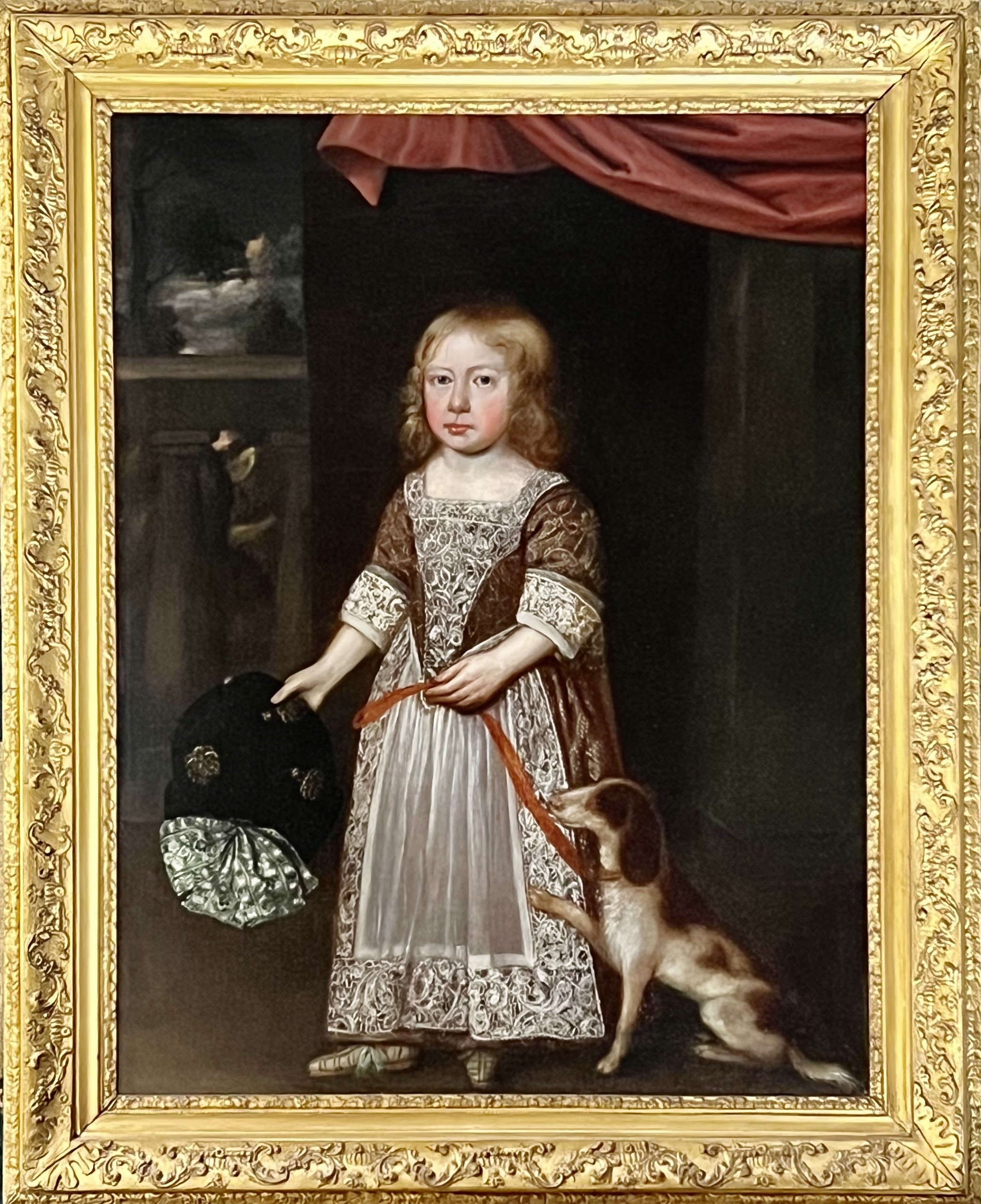
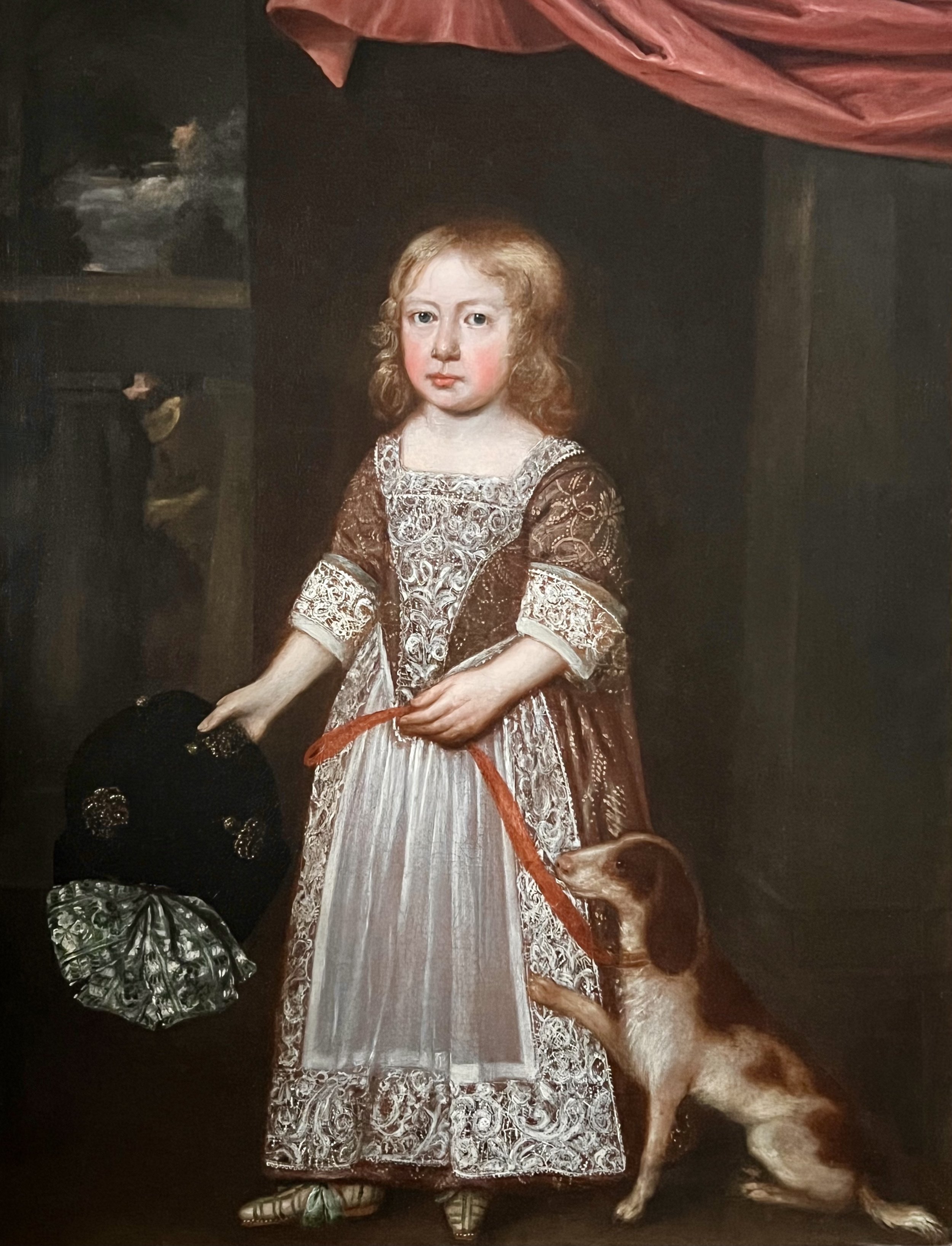
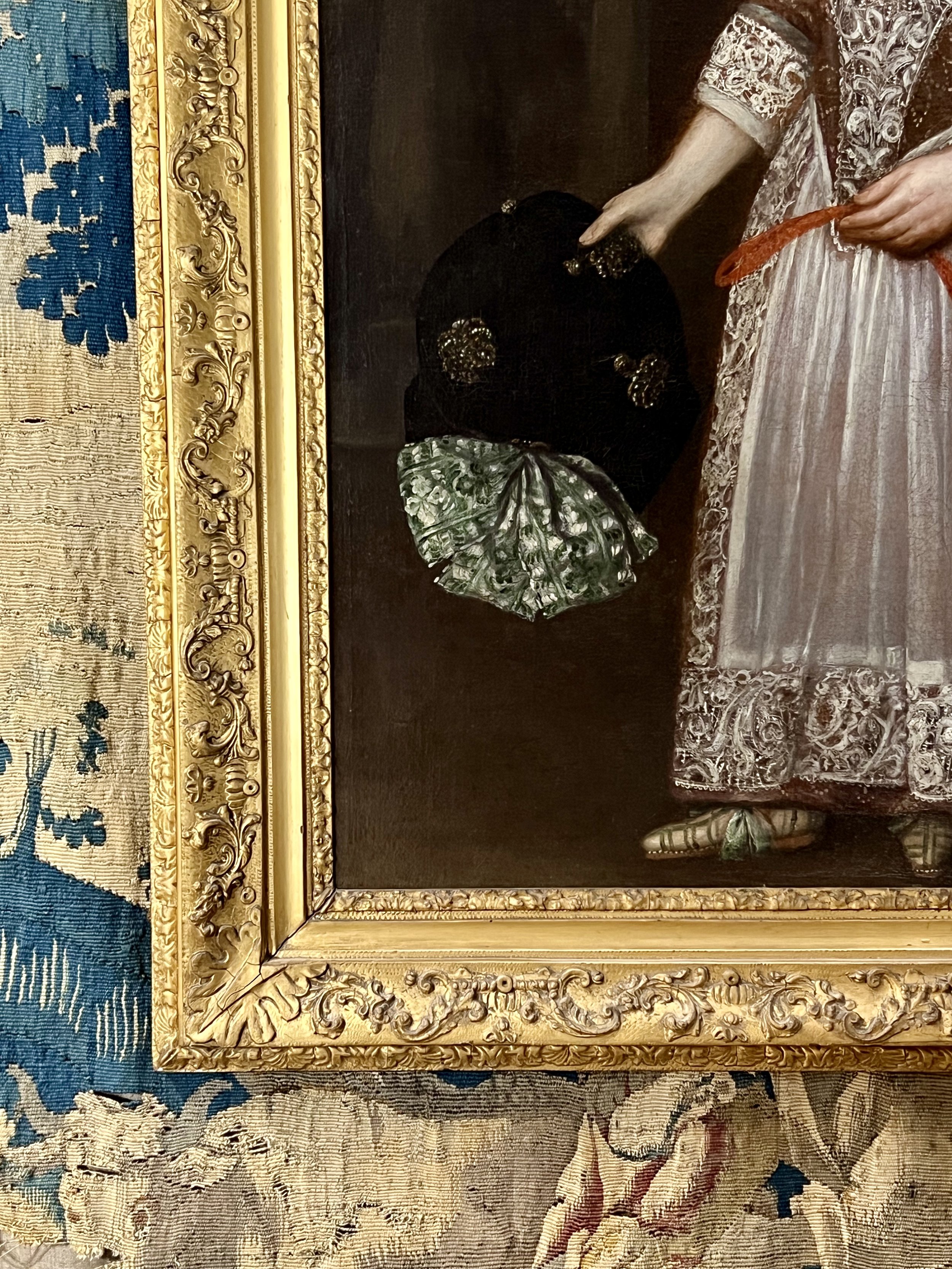
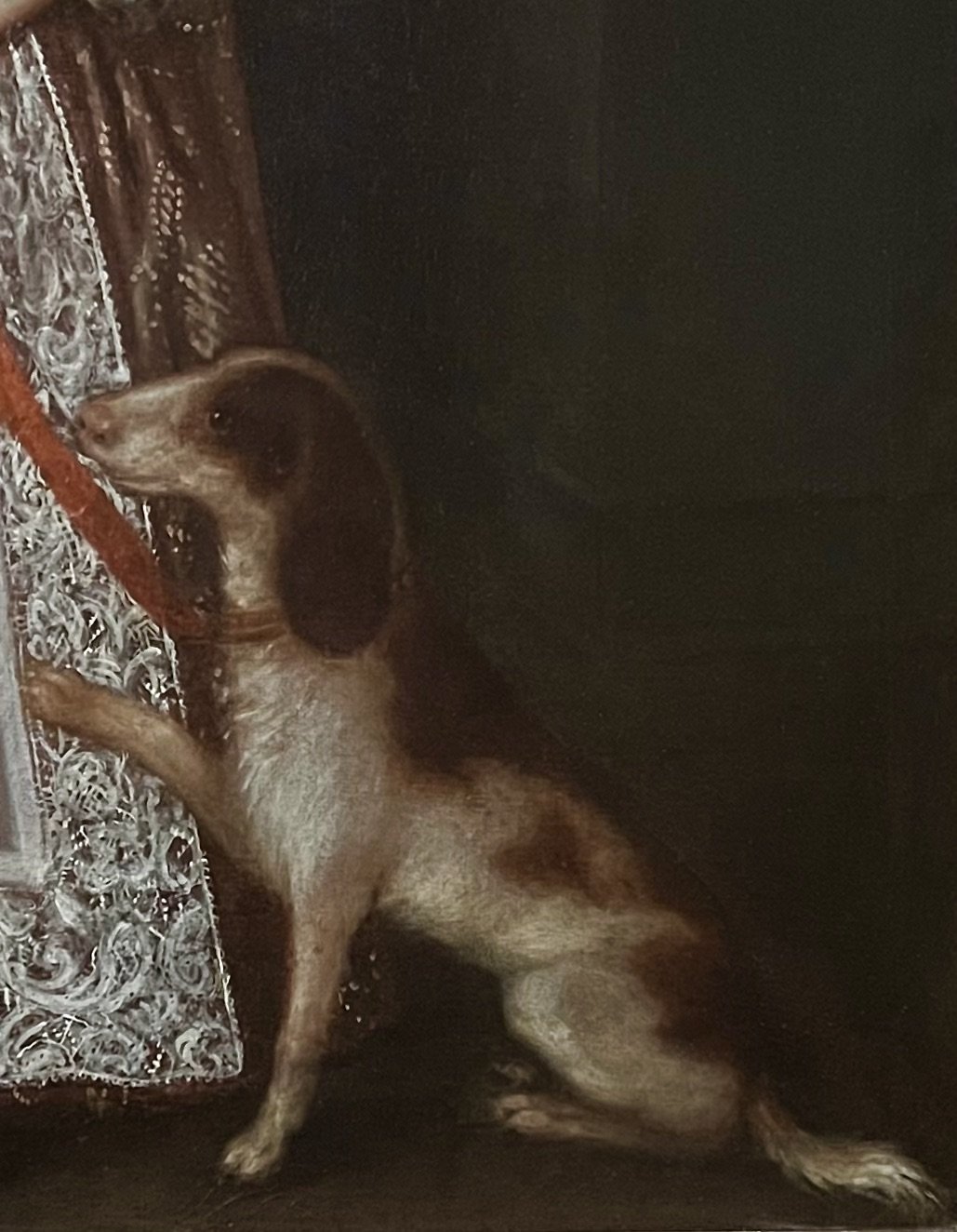
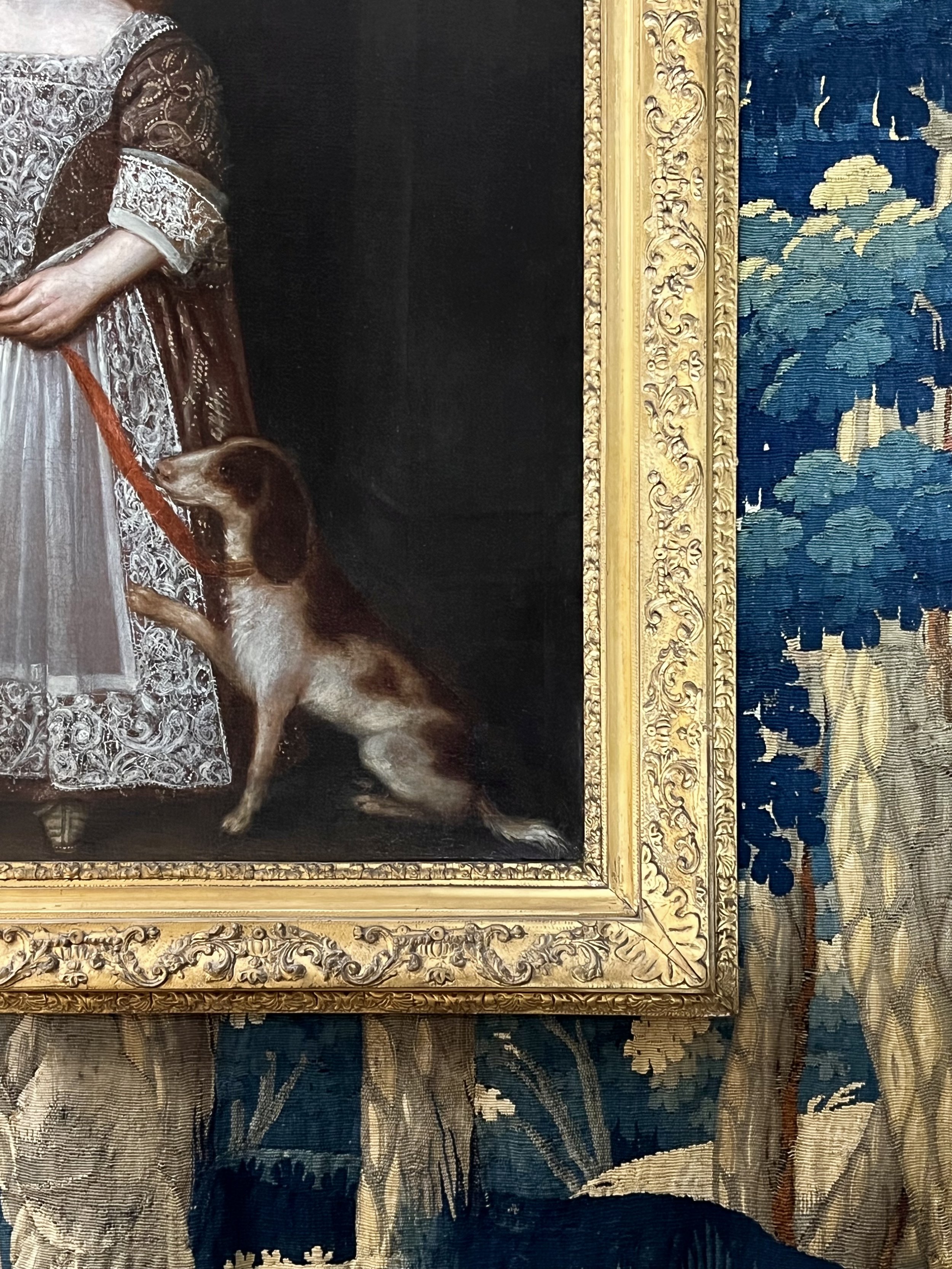
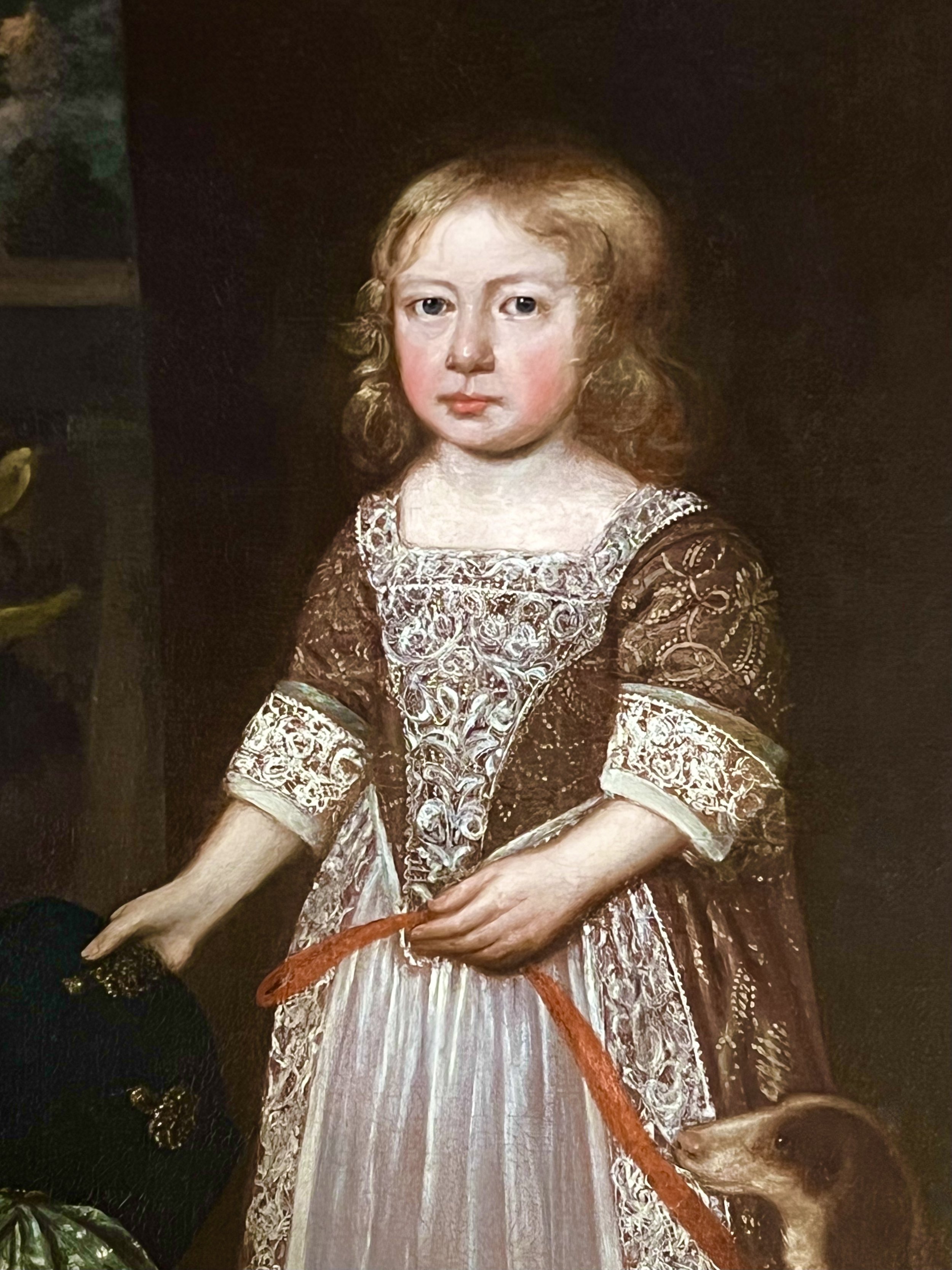

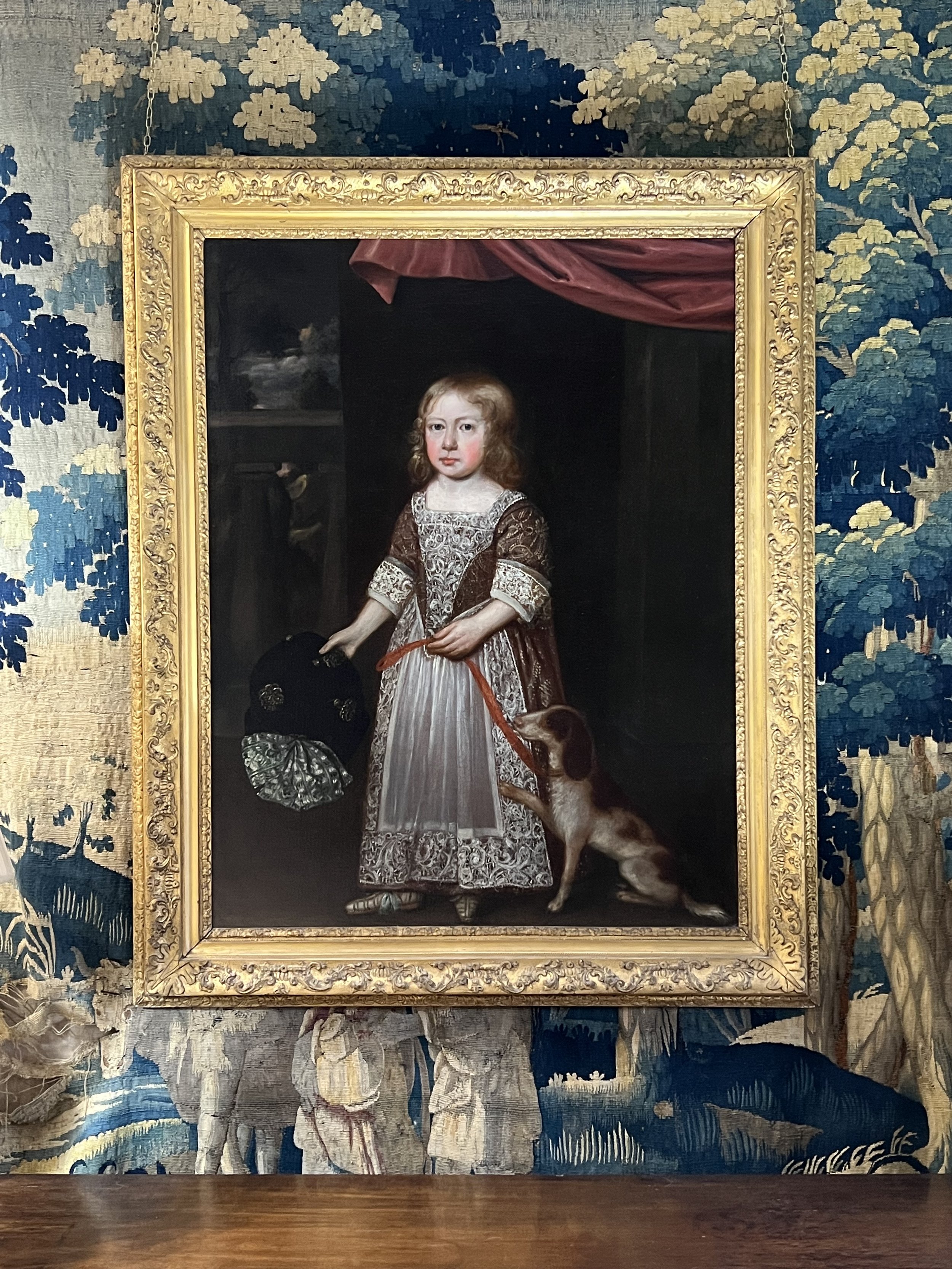
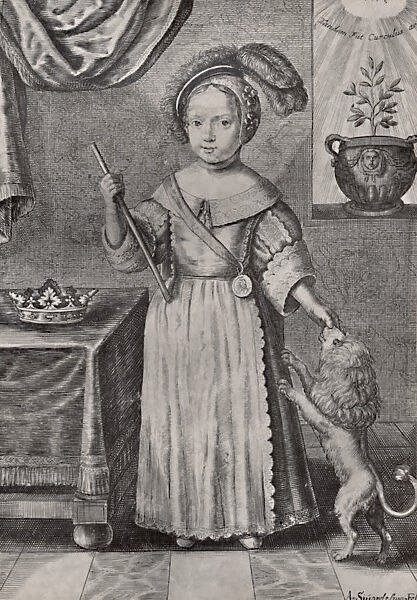
17TH CENTURY PORTRAIT OF KING WILLIAM III AS A BOY - NORTHERN EUROPEAN SCHOOL C.1660.
A rare and charming portrait of King William III of Great Britain and Ireland as a boy with his pet dog. This highly decorative portrait exhibits a clear baroque aesthetic – with exuberant patterned costume, the use of chiaroscuro and the swag of red drapery above the sitter.
The aristocratic young sitter is depicted full length upon a terrace with a balustrade and landscape beyond. He has wide eyes, rosebud lips and hair which tumbles around his shoulders.
A key indicator of young children’s dress is the leading string just visible, emerging on the right of the child’s body under the elbow, and distinguishable at waist height. Leading strings were two lined strips of fabric that fell vertically to three-quarters of the way down the body, one from each shoulder and they were a useful means to grab hold of and steer a wayward toddler.
During the seventeenth century boys and girls wore very similar clothing. Both girls and boys wore skirts until boys were ‘breeched’ – i.e. put into breeches (short trousers) between the ages of five and seven. After the age of seven boys wore clothing very similar in form and construction to that worn by adult men. The child here looks to be below the age of seven and is most likely a boy (despite wearing clothing that looks female to the modern eye).
He wears a bodice and matching skirt made from shiny brown fabric that has been embellished (possibly embroidered) with a meandering line, echoing the shape of a stylised stem and flowers. This high status individual also carries a voluminous jewel encrusted hat, and they sport fine footwear constructed of ribbons of fabric.
It is possible to date this portrait to the third quarter of the seventeenth century due to the open texture and size of the pattern on the lace of the apron, bodice and cuffs when scrolling foliate designs of needle lace (also known as parchment lace) were popular.
The sitters long and loose hair, facial expression and their lack of traditional female accessories (such as pearls) also seem to indicate a male sitter, as does their pet their which appears to be an active and loyal pet to command, rather than a passive adjunct to the sitters beauty which is traditional in female portraits of the period.
This portrait has been further identified as the young monarch through his physiognomy and costume in other works of the period, including an engraving by 9 or after Sivordtsma ( see carousel below)
This fine work is in an excellent state of conservation, and is ready to hang and enjoy in an antique 18th century carved gilt and gesso frame, which has a wonderful mellow colour.
I am most grateful to Jacqui Ansell, Senior Lecturer, Christie’s Education for the detailed information and analysis that she has provided on fashion and costume.
Provenance: Private collection Sussex, UK.
Higher resolution images on request. Worldwide shipping available.
Canvas: 43.5” x 33.5” / 111cm x 85cm Frame: 48” x 38” / 122cm x 96.5cm
Price: £14250

